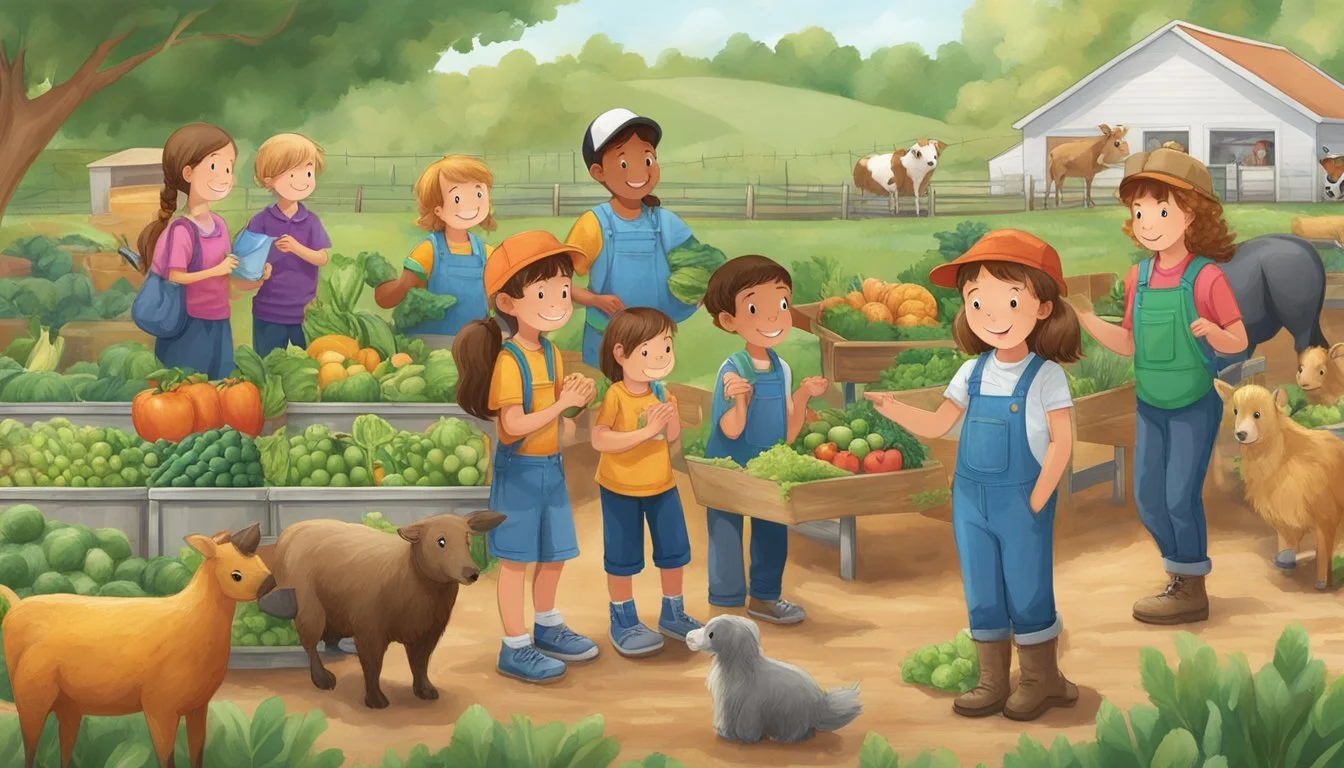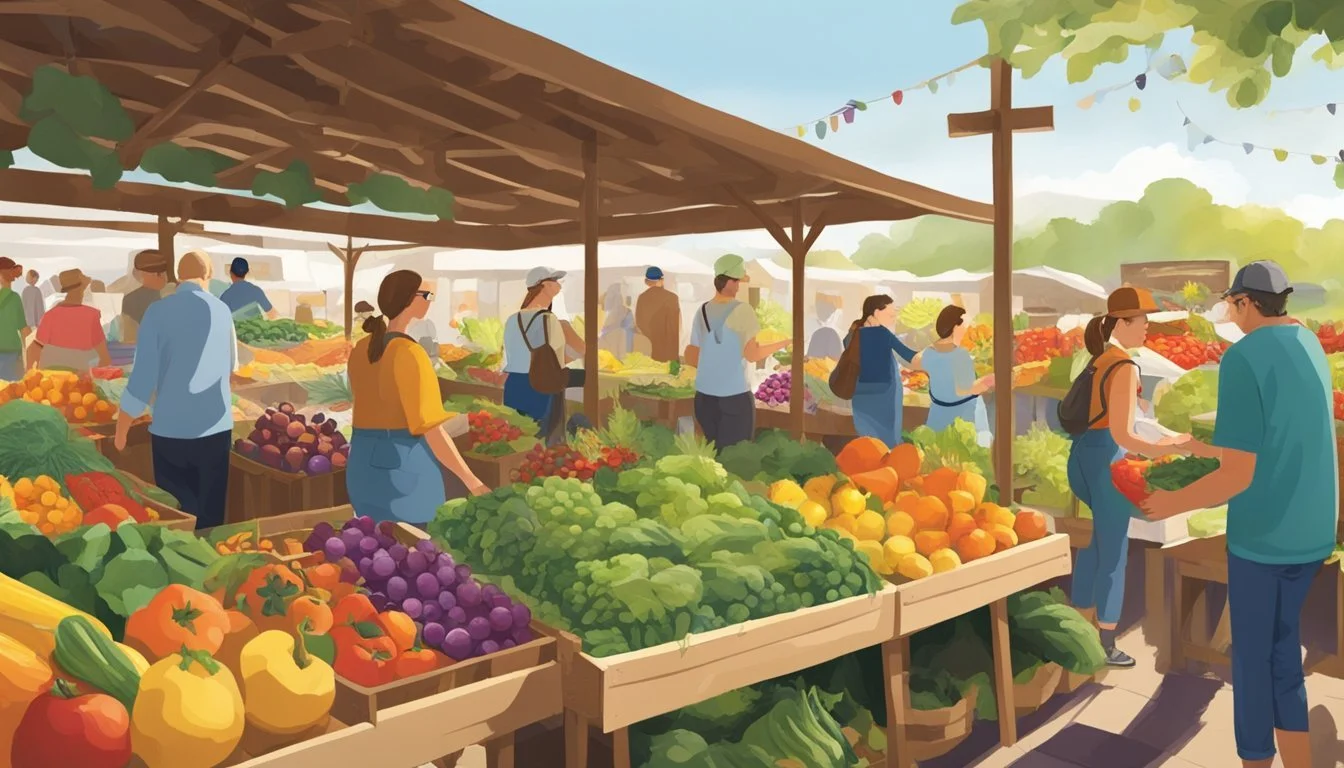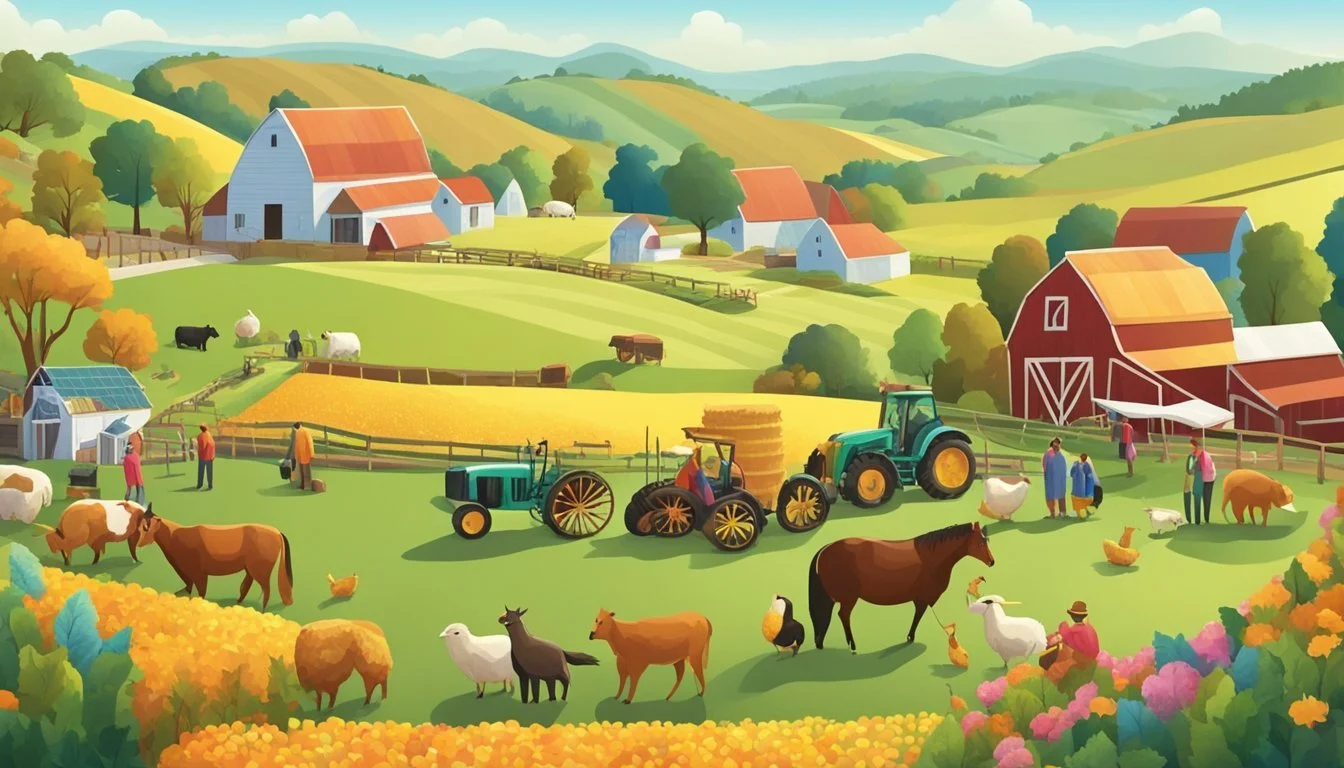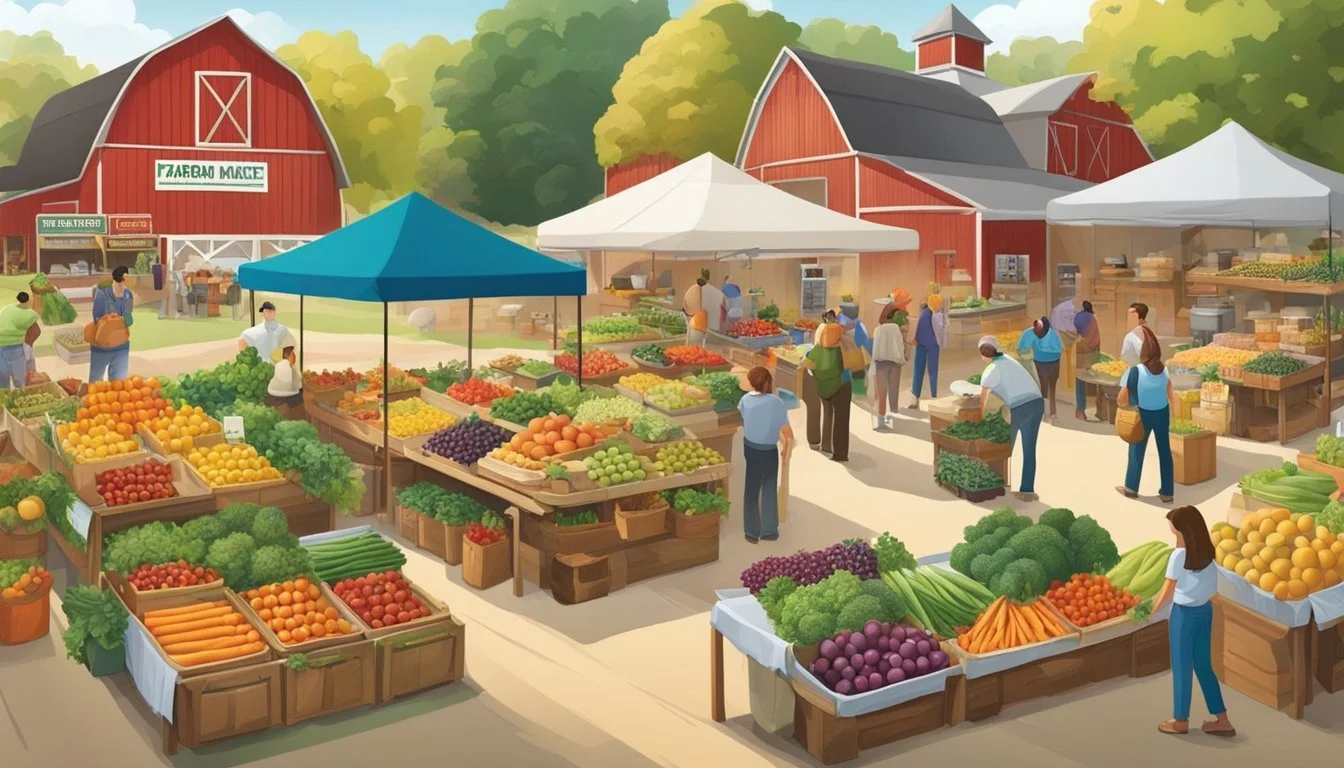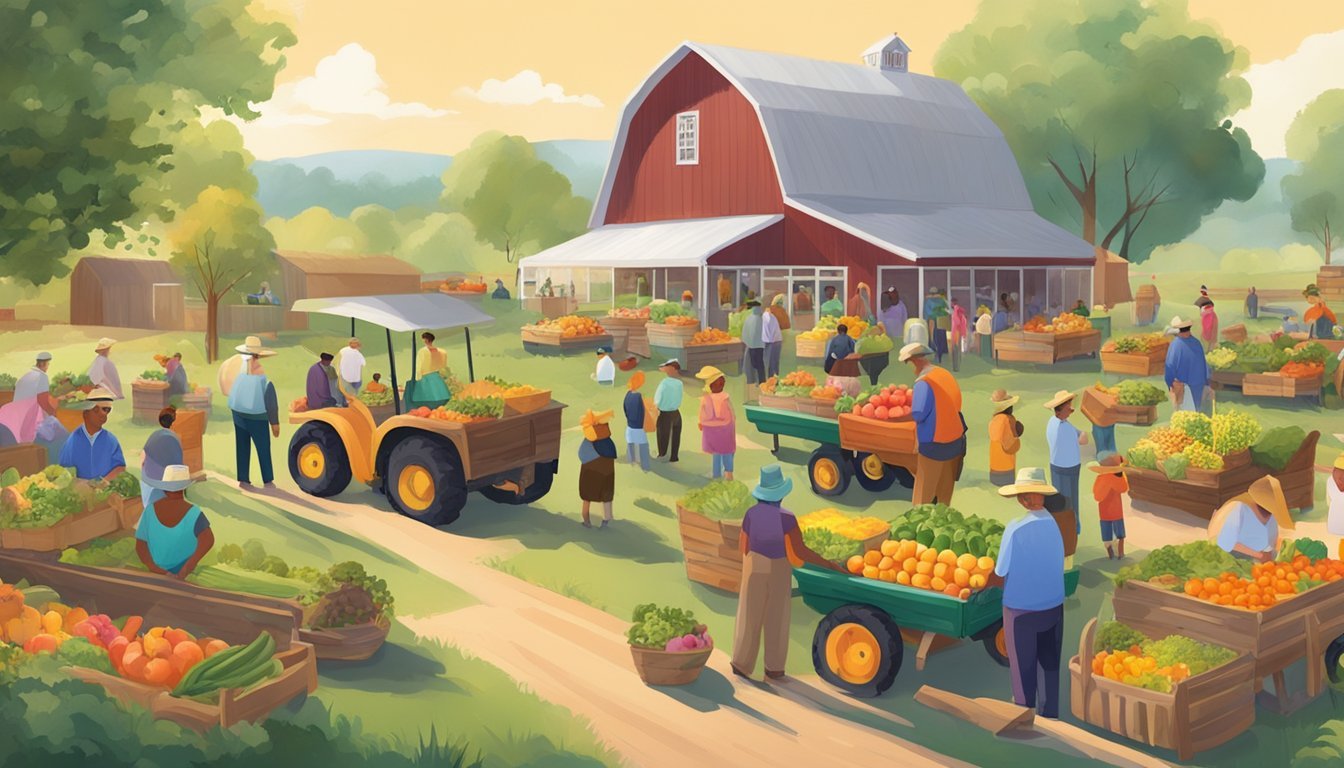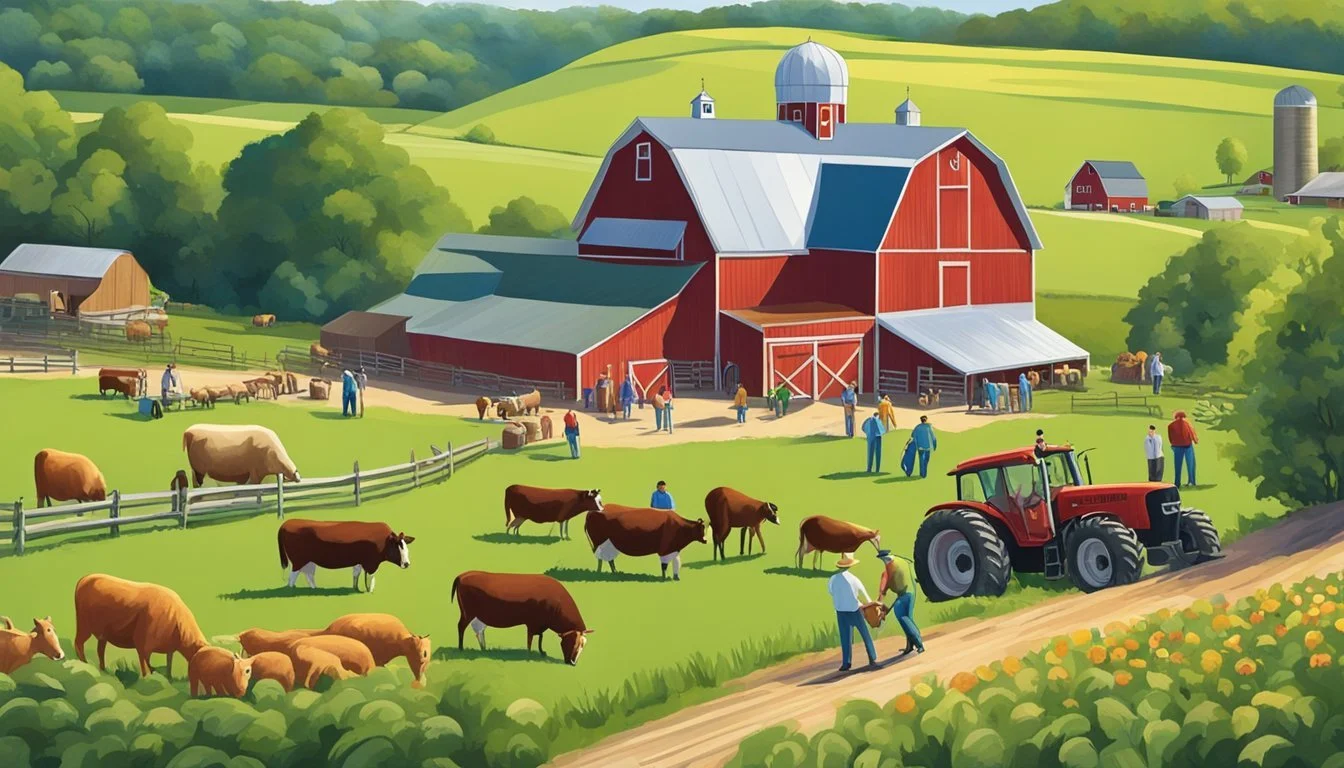Easter Farm Visits
Engage with Local Producers for a Seasonal Adventure
Easter is a festive time that often heralds the coming of spring, an occasion marked by community gatherings and the celebration of renewal. Taking advantage of the season, Easter farm visits provide a unique opportunity for families to connect with local producers, understand where their food comes from, and support regional agriculture. These outings enable visitors to engage with farming communities, fostering a closer relationship between consumers and the sources of their food.
Such visits can have an educational component, where both adults and children learn about sustainable farming practices and the importance of supporting local economies through agriculture. They may include activities like guided tours, hands-on farming experiences, and direct interactions with farmers, who share their knowledge and passion for what they grow and raise. This immersive experience enriches the community’s knowledge and appreciation of the agricultural process and often leads to stronger local producer-to-consumer relationships.
The farm-to-table concept, emphasized during these Easter farm visits, showcases the freshest produce and products right from the source. Visitors are often introduced to a variety of locally produced goods, which might include seasonal vegetables, fruits, dairy, meats, and artisanal products. By forming these connections, local producers gain new avenues to market their fresh, wholesome foodstuffs directly to consumers, while visitors benefit from the quality and flavor of just-harvested goods. This symbiotic relationship proves invaluable for community cohesion and the vitality of regional food systems.
The Importance of Local Produce in the Community
Local produce stands as a cornerstone within community dynamics, offering myriad benefits that extend far beyond the simple transaction of purchasing food. Communities that emphasize the importance of local foods foster stronger bonds between consumers and producers, which in turn cultivates a more resilient local economy.
Local farming operations are vital to the community fabric. They often employ sustainable agriculture practices that benefit the environment. Moreover, they provide consumers with access to fresh and nutritious options, which can contribute to better health outcomes. Consumers value the farm-to-table experience, enhancing their understanding of where their food originates.
Local farmers form the backbone of these community connections. They are not just producers; they become educators and stewards of land and tradition. The reduction in transportation inherent in local supply chains also ensures that produce retains its freshness and nutritional content.
A brief look at the local food movement's impact:
Community Engagement: Local foods encourage community events and partnerships.
Environmental Stewardship: Reduced transportation distances lessen the carbon footprint.
Health Benefits: Accessibility to fresh produce promotes better dietary habits.
Economic Stability: Money spent with local farmers stays within the community, strengthening the local economy.
In conclusion, the significance of local produce is multifaceted. It supports agricultural revitalization, fair labor, and food transparency. Consumers benefit from interactions with local farmers at markets and agritourism events, which strengthens the local supply chain, ensures food freshness, and fosters a well-connected, informed community.
Exploring Farm to School Programs
Farm to School programs are initiatives that connect schools with local agricultural producers to supply nutritious food for students and establish mutually beneficial partnerships with local farms.
Nutritious Food for Students
Farm to School programs aim to improve the availability of nutritious food in educational settings. By integrating locally sourced produce into school meals, students have access to fresh and healthy options. The USDA has supported this movement as a means to enhance students' diets while simultaneously providing educational opportunities about nutrition and food origins.
Farm Visits: Educational experiences such as farm visits are incorporated to complement the curriculum.
Garden-Based Learning: Onsite school gardens engage students in growing and understanding food production.
Building Partnerships with Local Farms
The success of Farm to School programs is heavily reliant on the partnerships forged between schools and local farms. These collaborations are designed to benefit both educational institutions and agricultural producers.
Access to Markets: Local farms gain access to a consistent and reliable market through schools.
Experiential Learning: By participating, farms provide practical learning experiences for students.
Training for Farmers: Programs like "Bringing the Farm to School" offer resources and training to help farmers effectively market to schools.
In fostering these relationships, Farm to School programs work towards a sustainable food system that empowers local economies and educates the younger generation.
The Rise of Direct-to-Consumer Sales
With the landscape of food sales evolving, direct-to-consumer channels have become increasingly pivotal in connecting consumers with local producers. This shift to more personal, farm-centric buying experiences has been facilitated by a range of innovative methods and platforms.
Understanding Community Supported Agriculture (CSA)
Community Supported Agriculture (CSA) is an approach where consumers purchase a share of a farm's harvest in advance. In turn, members receive a regular allotment of fresh produce throughout the farming season. This model offers stability to farmers and fosters a mutually beneficial relationship between them and consumers. Direct sales through CSAs climbed substantially during the COVID-19 pandemic as buyers sought reliable sources of fresh food.
The Role of Farmers Markets
Farmers markets function as a key venue for direct-to-consumer sales, allowing for face-to-face interaction between shoppers and local producers. These markets offer a variety of fresh, local products and usually operate on a regular schedule such as weekly. Consumers value farmers markets for their role in supporting local economies and providing access to fresh food.
Online Marketplaces for Local Foods
The digital age has seen the rise of online marketplaces for local foods, which enable producers to reach a broad audience without geographical constraints. These platforms vary from farm-specific e-stores to larger aggregate websites that host products from multiple farms. They serve as a convenient option for consumers to explore and purchase local produce, and have seen increased patronage especially during the COVID-19 pandemic, when minimizing person-to-person contact became essential.
The Consumer's Guide to Visiting Local Farms
Visiting local farms connects consumers with the origins of their food and provides insight into the agricultural process. When embarking on such visits, individuals should prepare for educational and interactive experiences, and know how to find and engage with local producers.
What to Expect During Your Visit
When visiting a local farm, consumers can anticipate a hands-on experience with various aspects of agricultural life. One may encounter:
Tours of the Fields: A guided walk through crop areas to see first-hand how food is grown.
Animal Encounters: Opportunities to observe or interact with farm animals, if present.
Product Sampling: Trying fresh produce or farm-made goods, often available for immediate purchase.
Educational Talks: Sessions where farmers share knowledge about sustainable practices and food production.
Visitors should dress appropriately for the outdoors, wear sturdy footwear, and be prepared for weather changes.
How to Connect with Farmers
Meaningful engagement with farmers can enrich the visit:
Ask Questions: Inquire about cultivation techniques, seasonal cycles, and challenges faced by the local food industry.
Share Feedback: Provide positive comments or constructive criticism about the produce and the visitor experience.
Express Interest: Show a genuine desire to learn about the farm's operations, which can lead to a deeper connection.
These interactions empower both parties; consumers gain a better understanding of their food sources, and farmers receive direct consumer feedback.
Finding Farms in Your Area: Maps and Directories
Discovering local farms is facilitated by various tools and platforms:
Online Maps: Services like GrownBy provide digital maps pinpointing local farms and their offerings.
Farmers Market Directories: Lists of local markets often include information about farms participating as vendors.
Community Supported Agriculture (CSA): Joining a CSA can offer a regular schedule of farm visits and produce pickups.
Agricultural Extensions: University or government extensions often maintain directories of local producers.
Here is a simplified process to find and visit local farms:
Utilize a map or app to identify nearby farms.
Check farm websites or social media for visitor information and produce availability.
Plan the visit according to the farm’s schedule and any specific event details.
Engage with farmers and staff on-site to learn and establish ongoing connections.
Economic Impact on Farmers' Income and Pricing
Local producers face a multifaceted economic landscape influenced by income variances and pricing challenges. These factors are pivotal in shaping the sustainability and growth of their agricultural businesses.
Challenges and Opportunities for Local Producers
Local farmers are often challenged by income fluctuations, which can be attributed to factors like market prices, production costs, and policy changes. Between 2013 and 2018, significant income drops were observed, with net farm income decreasing by nearly 50%. This volatility can stem from changes in commodity prices such as corn, wheat, and dairy, and external influences like economic downturns. Nevertheless, these challenges offer opportunities for diversification and direct-to-consumer marketing, as seen with the proliferation of farmers' markets from 1,755 in 1994 to 8,761 in 2019.
Risks: Price volatility, high operational costs
Opportunities: Diversification, direct sales (e.g. farmers' markets)
Understanding Local Food Pricing
The pricing of local food is a critical aspect that directly impacts farmers' income. It involves a balance between covering the cost of sustainable production and remaining attractive to consumers. Local food pricing is often driven by:
Production costs (labor, equipment, feed)
Market demand
Quality and uniqueness of produce
Local producers can capitalize on agritourism and other value-added experiences to justify higher prices and increase income while providing consumers with high-quality products and authentic experiences. However, these pricing strategies must always consider the consumer willingness to pay and existing competition.
Factors Influencing Pricing: Sustainability, quality, consumer demand
Strategies: Value-added products, agritourism experiences
Promoting Sustainability and Abundance
Easter farm visits offer a unique opportunity to observe firsthand how local producers are championing sustainability to ensure an abundant future. This section will examine the connection between responsible farming practices and the mitigation of environmental concerns.
Farming Practices and Environmental Concerns
Local producers often adopt sustainable agriculture practices such as crop rotation, conservative tillage, and organic pest control. These practices play a critical role in maintaining soil health and biodiversity, which are essential for a productive and sustainable farm ecosystem. By rotating crops, farmers prevent soil depletion and reduce the need for chemical fertilizers, leading to less runoff and groundwater contamination.
Crop Rotation:
Reduces reliance on chemical inputs
Enhances soil structure and fertility
Conservation Tillage:
Reduces erosion
Improves water retention
Organic Pest Control:
Minimizes harmful pesticides
Promotes natural pest predators
In the context of climate change, these environmentally conscious methods contribute to the reduction of greenhouse gas emissions from the agricultural sector. Cover cropping, for example, sequesters carbon and enriches the soil.
Local food producers also address environmental concerns through agritourism activities that educate the public on the importance of sustainability in agriculture. These activities can include interactive experiences such as:
Picking fruits and vegetables
Feeding farm animals
Navigating corn mazes
This reconnection with food origins provides insights into the challenges and successes of farming in harmony with nature, fostering a community that values and supports sustainable practices. The abundant yield resulting from these practices ensures that farms can continue to provide for their local communities and contribute to food security on a broader scale.
Creating Relationships with Retailers and Restaurants
Building enduring connections with local retailers and restaurants is pivotal for local producers aiming to supply fresh, quality food directly to businesses. It strengthens supply chains and bolsters both local and regional food systems.
Supplying Fresh Food to Businesses
Local producers offer an invaluable resource to retailers and restaurants by providing fresh, seasonal produce that can elevate the quality of food offerings. By forming partnerships with businesses, producers assure a steady demand for their products, while businesses gain a reliable source of fresh food that appeals to consumers' increasing desire for local fare.
Retailers, such as grocery stores, benefit from advertising locally-sourced produce which can attract health- and environmentally-conscious shoppers.
Restaurants gain the advantage of featuring menu items that highlight the freshness and locality of ingredients, creating a unique dining experience that can differentiate them from competitors.
Case in point:
Business Type Advantage of Partnership Potential Impact on Supply Chain Grocery Stores Enhanced product variety and freshness Shorter supply chains, reduced transportation costs Restaurants Unique, seasonal menu offerings Predictable demand, fostering closer producer ties
Exploring Local and Regional Food Systems
Local and regional food systems encompass the network of producers, processors, distributors, retailers, and consumers that collectively support the production and consumption of local foods. A robust local food system offers several benefits:
It can reduce environmental impacts by shortening the travel distance of food, which cuts down on greenhouse gas emissions associated with transportation.
It may bolster the local economy as money spent on local food is more likely to remain in the community, supporting other local businesses and jobs.
For local producers, integrating into these systems requires an understanding of the complexities of the food supply chain and the roles that different entities play. Producers should aim to:
Establish trust and regular communications with retailers and restaurant owners, ensuring a clear understanding of expectations.
Work within the food systems to navigate the seasonal fluctuations of supply and demand, adapting to changes and maintaining a seamless flow of produce to businesses.
By tailoring their production and marketing strategies to meet the demands of these food systems, local producers can create sustainable, fruitful partnerships with businesses.
Health and Safety Precautions in the Age of COVID-19
In response to the ongoing COVID-19 pandemic, Easter farm visits necessitate rigorous health and safety precautions. Farms are a cornerstone of community engagement, offering a unique opportunity to connect with local producers, but they also must ensure the well-being of visitors and staff.
Vaccination Status:
The CDC advises anyone eligible, especially those in frequent contact with the public, to be fully vaccinated.
Booster shots are recommended for added protection.
Masking and Physical Distancing:
Masks should be worn, particularly in indoor settings or when physical distancing cannot be maintained.
Physical barriers, such as plexiglass shields, may be used in transaction areas.
Hand Hygiene:
Hand sanitization stations should be readily available throughout the farm.
Signs encouraging frequent handwashing can serve as positive reminders.
Limited Guest Capacity:
Limiting guest numbers can help maintain physical distancing.
Timed entry or reservation systems can manage visitor flow.
Isolation Protocols:
Isolate staff or visitors who show symptoms promptly and provide them with a mask.
Enhanced Cleaning:
High-touch surfaces require regular disinfection.
Continued Monitoring:
Farms should stay informed with CDC's latest community-level guidelines.
Adapting Activities:
Offer socially-distanced or virtual activities when possible.
The implementation of these precautions can create a safe environment for both visitors and farm workers during public events like Easter and beyond, allowing the community to continue enjoying the benefits of local agriculture without compromising health and safety.
Understanding the Diversity of Edible Farm Products
The diversity of edible farm products that consumers can find on a farm visit ranges from traditional fruit and vegetables to an assortment of animal-derived foods. As interest in local and sustainable food sources grows, so does the variety of products available directly from producers.
From Fruit and Vegetables to Livestock
Local farms often offer a wide array of fruit and vegetables, each cultivated to capitalize on the regional soil and climate conditions, ensuring freshness and quality. Patrons are likely to encounter staples like apples, berries, carrots, and leafy greens, as well as seasonal specialties personalized to the farm's unique offerings.
Moving beyond plant-based items, many local producers raise livestock, providing a selection of fresh meats. Visitors might find farms offering beef, poultry, pork, and sometimes lamb, with an emphasis on ethical raising practices and the health benefits of pastured animals.
Specialty Products: Honey, Cheese, and More
Specialty farm products introduce visitors to the rich subtleties of local food production. Farms often diversify their offerings with items like honey and cheese:
Honey: Produced on-site from farm's own beehives, often with a taste that reflects the local flora.
Cheese: Crafted from the milk of the farm's cows, goats, or sheep, offering a variety of textures and flavors unique to the farm's practices and animal diet.
Each product represents an intersection of local agriculture, tradition, and innovation, deepening consumers' understanding and appreciation of the fresh food ecosystem.
Policy and Support for Local Farming Initiatives
Support for local farming initiatives is crucial for their success and sustainability. Policies, government programs, and advocacy efforts play a significant role in shaping the environment in which local producers operate and influence the vitality of farming communities.
Government Programs and Grants
Federal and state government entities provide a range of programs and grants designed to support the agriculture sector. Among them, the United States Department of Agriculture (USDA) offers a variety of grants—including the Farmers Market Promotion Program and Local Food Promotion Program—which are aimed at enhancing local food systems. These programs provide financial assistance to local producers, helping them to expand their market reach and improve sustainable agricultural practices.
Examples of Government Support:
Financial Incentives: Subsidies and grants for farm improvements and adoption of sustainable practices.
Technical Assistance: Educational programs and resources for farmers navigating local markets.
Advocacy for Local Producers
Advocacy organizations play a vital role, pushing for policies that benefit local producers and their communities. They work to increase public awareness and influence local preferences to support local farming efforts. Through collaborations, these groups aim to enhance political will, promoting a regulatory landscape that favors small-scale, sustainable agriculture.
Key Advocacy Actions:
Lobbying: Engage with legislators to advocate for beneficial farming policies.
Campaigns: Run public awareness drives to bolster local agricultural support.
Impact of Policies on Farming Communities
Effective policies and programs can have a positive impact on local farming communities. By bolstering local food systems, policies can contribute to the economic stability of small farms and enhance their community presence. Well-conceived initiatives aid in preserving the environment, reducing food miles, and fostering an understanding of the importance of sustaining local food sources.
Community Benefits:
Economic Stability: Greater financial security for farming families.
Environmental Preservation: Incentives promoting eco-friendly farming techniques.
Case Study: The Impact of Michigan's Farm Visits
Michigan's agricultural sector has innovatively expanded to include agritourism, diversifying the state's economy and enhancing the connection between consumers and local producers. A pertinent case study reveals that farm visits in Michigan contribute to commercial, ecological, social, and cultural spheres.
Commercial Impact: Michigan's farm visits play a role in supporting local economies. Visitors often purchase products directly on-site, leading to a rise in farm revenue. Aggregated data suggests a positive trend in consumer behavior towards buying local, high-quality farm products after experiencing farm life firsthand.
Ecological Influence: On the ecological front, farm tourists gain awareness about sustainable practices. Michigan's agritourism educates visitors on the importance of maintaining a healthy environment. Consequently, this has encouraged farms to adopt more sustainable farming methods to showcase their ecological practices to visitors.
Social and Cultural Significance: Socially, farm visits are knitting communities closer, facilitating a deeper understanding of rural lifestyles among urban visitors. Culturally, they preserve farming heritage by allowing an immersive experience into the traditional ways of farming life. This exposure helps in maintaining the state's rich agricultural identity.
Educational Aspect: Agritourism in Michigan provides educational opportunities. Tourists learn about food production, which impacts their attitudes and behaviors towards local food consumption and the agricultural community. It enhances their knowledge of farm operations and the challenges that come with it.
In essence, Michigan's agritourism via farm visits is fostering a symbiotic relationship between consumers and producers, reinforcing the value of local produce, while bolstering the state's agricultural community.


